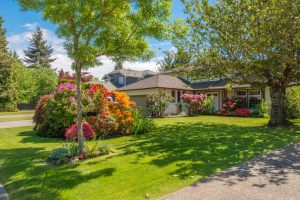Landscaping is not just about making your garden beautiful. It’s about maximizing the outdoor space of your home through careful layout and design. You can make your dream garden happen, but before you do, here are five practical things you need to know:
1. Know Your Land
Before you begin, you should know four important things about your garden: light levels, temperature, humidity, and soil type. This is also known as your garden’s microclimate.
Microclimates have four categories: full sun, partial shade, shade, or deep shade. This will determine which types of plants can thrive and which won’t. You’ll also have an initial idea on where to place your flora later on.
2. Know Your Garden’s Purpose
The perfect garden doesn’t need to be big or expensive. It’s perfect if it does what you want it to do. Ask yourself what you really want out of it. Do you want to start a flower or vegetable garden? Is it a place you can hold a family barbecue at, or is it more for solitude and meditation? Is there an open space where kids and pets can play, or is it a garden designed to be enjoyed from afar?
Knowing your garden’s purpose makes it easier to decide, especially when it comes to the design.
3. Know Your Layout
Now that you know more about your land and the purpose of your project, it’s time to imagine the details of your garden’s layout. What is it like to walk through your new garden? How does your home connect to it? Consider the type of natural shade you can get, as well as the overall atmosphere. Finally, it’s also nice to think about whether you want water features such as fountains or bird baths in your garden.
Complement your home’s existing features. For example, a home with a pool can benefit from plants that can provide privacy and shade. If there are areas you don’t want people to see, you can use hedges instead of a fence.
4. Use a Practical Design
Consider your home’s natural environment. Local plants will last longer while imported plants will be harder to maintain. Your garden’s microclimate might even be perfect for growing certain vegetables or flowers that you can sell in the future.
Hardscape whenever you can. Hardscaping is when manmade and natural features combine for a practical purpose. An example is the use of gravel or stone paths instead of covering the ground with cement or tile.
5. Ask the Experts

There are a lot of details that go into planning and creating a good landscape design. The good thing is that reputable garden centers in Minnesota and other states are happy to assist you if you have any questions. Give them an idea about your garden’s condition and they can make suggestions.
Schedule a consultation, especially if you’re doing things on your own. Professionals have all the tools you need to make your next landscaping project successful.
It takes a little research before you can even begin to landscape your garden. These practical suggestions will help get you started. If you get into trouble, you can always visit your local garden center for more pieces of advice.

